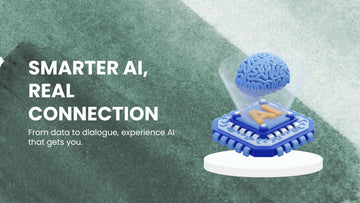Build Your AI Assistant

Should You Build Your Own AI Assistant?
We’re surrounded by AI assistants — from Siri and Alexa to ChatGPT and Google Bard. But if you're running a business, managing clients, or just juggling multiple workflows, you might be asking: should I build my own?
What Is a Personal AI Assistant?
A personal AI assistant is a tool designed to help you automate tasks, answer queries, schedule things, draft content, or even engage with customers — all using artificial intelligence. Unlike general tools like ChatGPT, a custom-built assistant is trained (or configured) specifically for your needs.
Why Would You Build One?
If you're already using AI daily, a custom assistant can take that one step further. Here are a few reasons why you might want to build one:
- Tailored Workflow: Automate the things you do often — emails, reminders, customer replies, file generation, etc.
- Branded Responses: Teach it to speak in your tone, use your FAQs, or link to your tools.
- Save Time: Let it handle repetitive or manual tasks behind the scenes.
- Private & Controlled: Build on open-source models or private data so you’re not reliant on public APIs.
When You Probably Shouldn't Build One
As powerful as AI is, building your own assistant isn’t for everyone. Here are some reasons to pause:
- High Complexity: If your needs are simple (like getting writing help or managing a calendar), public tools are more than enough.
- Time Investment: Setting up tools like LangChain, OpenAI APIs, or vector databases takes time and learning.
- Ongoing Maintenance: You’ll need to update, fine-tune, and possibly host your system — not always plug-and-play.
What Can a Custom Assistant Do?
If you do want to build your own, here are real use cases:
- Customer Support: Answer product questions using your documentation.
- Personal Admin: Schedule meetings, sort emails, write reports.
- Sales Agent: Recommend products based on a script or inventory.
- Marketing Assistant: Draft social posts, newsletters, captions in your tone of voice.
- Learning Buddy: For students or creators who want a research partner.
Tools to Start With
You don’t need to start from scratch. Here are beginner-friendly tools to build or semi-build a personal assistant:
- OpenAI + Zapier: Create workflows that respond to messages, emails, or trigger automated replies.
- ChatGPT Custom GPTs: Create a "mini assistant" with your own data and instructions.
- Notion AI or Copy.ai: Add context-aware writing support to your workspace.
- Hugging Face: If you’re technical, train your own model or deploy it with custom code.
Build or Not to Build?
If your goal is speed, automation, and less context-switching, then yes — building or configuring your own assistant might be a great idea. But if you’re not ready to learn how these systems work or don’t have a specific goal, stick to off-the-shelf tools for now.
Tip: You don’t have to go all in. Start by editing prompts, building mini workflows, and teaching one tool to behave how you like — you’re already halfway to building your own assistant.
We at NFC Tagify explore tech that simplifies life and work — including smart NFC, automation, and practical AI.
📞 Call us: 01600800080
🟢 Message us on WhatsApp: +44 1600 800080
📧 Email us: info@nfctagify.com









